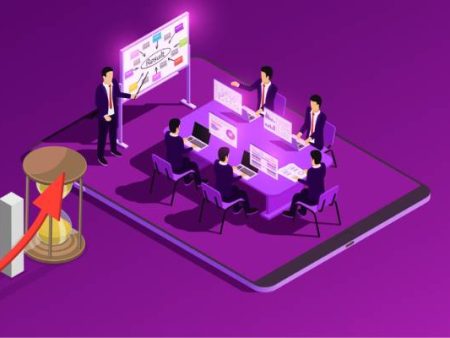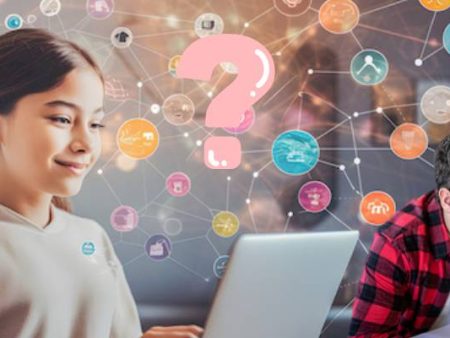There’s a quiet but powerful revolution happening in conference rooms, classrooms, and Zoom calls across the world. It isn’t about new fonts or another trendy template—it’s about a generation reshaping how presentations are created and consumed.
Gen Z, those born between the late 1990s and early 2010s, are walking into the workplace with expectations that rattle the old guard. They don’t just tolerate technology—they embrace it like second nature. And nowhere is this more visible than in how they approach presentations.
While Millennials and Boomers might still cling to the ritual of painstakingly crafting slides in PowerPoint or Keynote, Gen Z is looking at AI-generated slides and thinking: “Why would I waste hours on something a tool can spin up in minutes?”
But this isn’t just about efficiency. It’s about identity, priorities, and a completely different relationship with creativity and technology.
Why Presentations Became the Perfect Playground for AI
Let’s pause for a moment. Why did presentations become ground zero for this generational divide?
The answer is pretty simple: slides are everywhere. Business pitches, academic defenses, quarterly updates, marketing proposals—you name it, there’s a deck.
A 2022 Prezi report noted that employees spend nearly 10 hours a week creating presentations, much of it on tedious formatting rather than strategy or storytelling.
For a generation raised on TikTok, YouTube Shorts, and memes—where information is rapid-fire, visual, and engaging—that kind of slow, manual process feels downright archaic.
No wonder Gen Z is so quick to leap into the world of AI-powered storytelling: turning dry data into something vivid, interactive, and even fun.
The Tools Gen Z Loves (and Why)
From Canva’s Magic Design to Tome’s AI-driven narratives, from Microsoft Copilot to Beautiful.ai, the market is brimming with AI presentation tools.
But here’s the nuance: Gen Z doesn’t just use them for the shiny factor. They use them because these tools align with how they already communicate: fast, visual, collaborative, and iterative.
- Tome: Lets them start with a story prompt instead of a blank slide, which fits perfectly with their narrative-first mindset.
- Canva: Offers drag-and-drop simplicity that feels as natural as editing a TikTok filter.
- Beautiful.ai: Ensures decks don’t just look okay but look professional without hours of tweaking.
- Copilot: Seamlessly integrates with Microsoft ecosystems, giving Gen Z employees in corporate settings a productivity boost.
This isn’t experimentation. It’s becoming the default.
Why Gen Z Professionals Prefer AI Over Tradition
So, what exactly is driving this preference? Let’s break it down.
- Time Is Currency
Gen Z values efficiency more than polish. They’ve grown up multitasking—studying, side hustling, and networking all at once. AI-generated slides save hours, which they’d rather spend on strategy, delivery, or even personal downtime.
- Collaboration Is Key
Gen Z thrives in shared, digital-first spaces. They prefer platforms where multiple users can edit simultaneously, leave comments, and build together. Traditional PowerPoint feels solitary; AI tools feel social.
- Design Isn’t the Point
Older professionals often equate slide design with credibility. Gen Z? They see design as a baseline expectation. The real flex is content quality and delivery. If AI ensures clean slides, they’re free to focus on storytelling.
- Tech Comfort Zone
This is the first fully digital-native generation. Using AI doesn’t feel futuristic—it feels obvious. For them, not using it is the outlier.
- Identity and Values
Gen Z is pragmatic about work. They value authenticity, impact, and balance over tradition. If AI helps them cut through busywork, it aligns with their values.
Lessons From Academia: AI for Academic Presentations
Interestingly, Gen Z’s early exposure to AI-driven slides often comes in classrooms. With AI for academic presentations:, students can whip up class projects, group assignments, or thesis defenses in a fraction of the time.
Professors are split: some worry about creativity loss, while others see it as a leveler, giving students from under-resourced schools the same visual polish as their peers. The debates happening in lecture halls today mirror the debates happening in boardrooms tomorrow.
How Sales Teams Are Reacting
This generational wave isn’t limited to students. Look at how sales teams are adapting AI-driven decks.
- Personalization: Sales reps now generate tailored presentations for each prospect in minutes.
- Speed: Instead of waiting on design teams, reps can move faster through the pipeline.
- Consistency: AI ensures branding and tone stay uniform across hundreds of decks.
Gen Z consultants and sales reps are leading this shift because they’re comfortable with both the tech and the mindset of rapid iteration. This isn’t about cutting corners—it’s about winning in a world where attention spans are shorter and competition is fiercer.
The Investor Lens: The Future of Investor Pitches
Now let’s talk high stakes. In the future of investor pitches, Gen Z professionals aren’t shy about letting AI do the heavy lifting. But—and this is important—they’re also savvy enough to know investors can sniff out a generic AI deck from a mile away.
That’s why Gen Z often uses AI for the first draft, then layers in their own insights, anecdotes, and cultural fluency. They know the deck itself doesn’t seal the deal—the human delivery does. AI is the stagehand; they’re the performer.
This hybrid approach may well define the next era of fundraising: polished AI visuals combined with authentic, human storytelling.
The Creative Question: Does AI Kill or Free Creativity?
One of the biggest criticisms from older generations is that AI-generated slides stifle creativity. “If a machine is doing the design, where’s the artistry?” they ask.
But talk to Gen Z, and you’ll hear a different take. They don’t see creativity in aligning bullet points or resizing logos. They see it in shaping narratives, asking better questions, and using ai-powered storytelling: turning dry charts into compelling human stories.
For them, AI doesn’t replace creativity—it relocates it.
Risks and Blind Spots
Of course, it’s not all sunshine. Over-reliance on AI brings risks:
- Sameness: Decks can start to look alike if everyone uses the same toolkits.
- Skill Loss: Younger professionals may lose manual design skills if they never build from scratch.
- Credibility Gaps: Some audiences (especially older investors or executives) may still equate “handmade” with “serious.”
These risks don’t cancel out AI’s value, but they remind us that balance is crucial.
The Emotional Undercurrent
It’s easy to talk about efficiency and tech adoption, but there’s a deeper layer here. Gen Z carries anxiety about job security, climate change, and economic instability. They don’t want to waste energy on tasks that feel hollow.
When they say they prefer AI-generated slides, what they’re really saying is: “Our time matters. Let’s spend it on the parts of work that feel meaningful.”
That’s a generational philosophy as much as a workplace trend.
Where Do We Go From Here?
The shift is clear: AI-generated slides are here to stay, and Gen Z is accelerating the adoption curve. But the bigger story is about what this frees them to do:
- Focus on delivery and presence rather than formatting.
- Tell stories that resonate emotionally.
- Push creativity into content instead of mechanics.
- Redefine collaboration as something dynamic, real-time, and inclusive.
The rest of us—Millennials, Gen X, Boomers—can either resist this wave or learn from it. Because like it or not, Gen Z isn’t just the future of work. They’re the present.
Conclusion: More Than Slides
So, why do Gen Z professionals prefer AI-generated slides? Because they see presentations not as an art form of alignment and typography, but as a tool for communication. AI lets them skip the grunt work and focus on what matters: story, clarity, authenticity.
And maybe that’s the lesson for all of us. Slides aren’t the point—connection is. If AI helps us get there faster, perhaps the real creativity lies not in resisting the tools but in learning how to make them sing.


